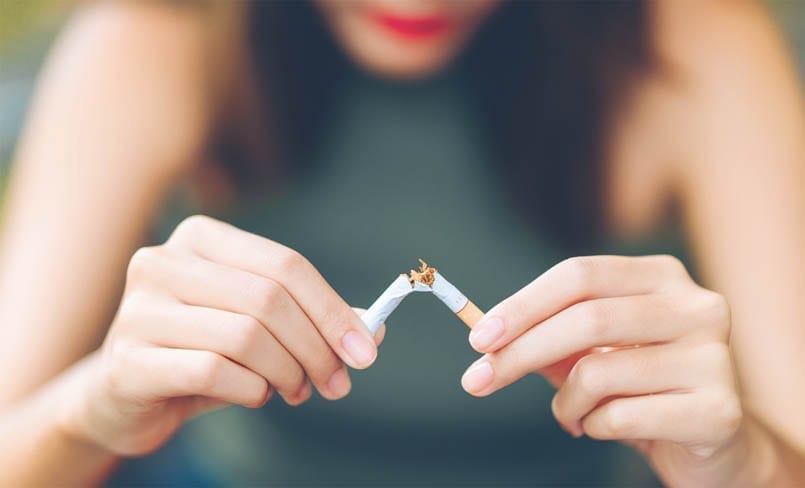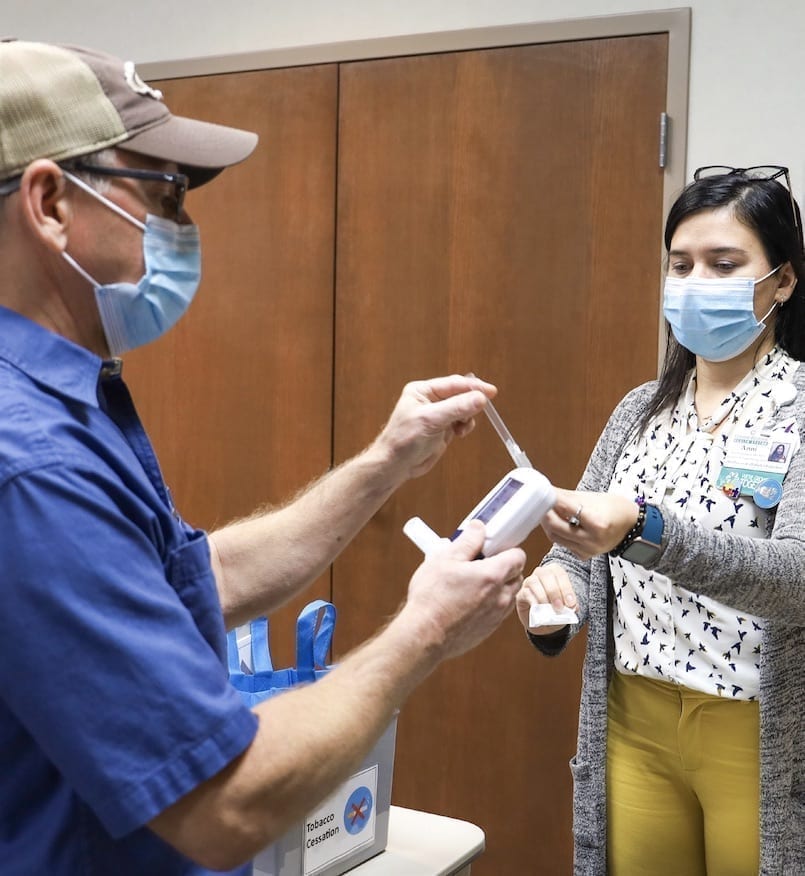31 Jan 2021 A mother’s love leads to healthier tomorrows
By John Patton
Kicking the habit is personal for Anni Fuenmayor, a certified tobacco treatment specialist at Conway Regional Health System.
Growing up, smoking tobacco was a family tradition for Anni’s household until it caused a tragedy. “I grew up in a household of heavy smokers. Sadly, my mother passed away from cancer,” she said. “After she passed away, I still could not quit. Later, when I realized I was pregnant with my son, Agustin, that’s when I began to wake up and realize I needed to make a change.”

She began with nicotine patches but soon decided she did not need the nicotine at all.
“Knowing that I was expecting was enough motivation for me,” Fuenmayor explained, “I quit cold turkey. I relapsed a couple of times after he was born, but I never went back to being a hard smoker. My son was too important for me to start smoking again.”
After she quit smoking, she decided to enter the health care field, where she is helping make tobacco cessation an integral part of the care provided at Conway Regional. Physicians rely on her work and that of her fellow tobacco treatment specialists to provide the detailed information and support that patients need to quit.
A native of Maracaibo, Venezuela, Fuenmayor came to the University of Central Arkansas through an international student scholarship program 16 years ago. She holds bachelor’s and master’s degrees from UCA in nutrition and is a certified lifestyle coach in the Conway Regional Wellness and Diabetes Education Department. She completed her tobacco treatment training through a Little Rock-based program funded by MD Anderson.
Recognizing a need within the community, Conway Regional’s Tobacco Cessation Program emphasizes 30-minute, one-on-one consultations. The most important factor, Fuenmayor said, is to make sure the plan for quitting tobacco matches the mental and physical needs of the person by knowing “where they are coming from.”
“Consultations with my clients are personal to me. I can relate to the struggles they are facing. Often, a patient will ask, ‘Have you ever smoked?’ When someone says no, sometimes the client begins to shut down,” Fuenmayor said. “Because I can explain my own triggers and cravings and talk about my cessation journey, it makes it easier for me to relate to what the patient is going through. I believe it helps them with their journey, knowing they are not alone.”
She added, “Most of the adult patients that have come through our program have smoked since they were children. That’s how I grew up as well. It was a cultural thing. I didn’t know any differently.”

As a native Spanish speaker, Fuenmayor can provide care to the Hispanic community as well. She has translated tobacco cessation information into Spanish and can identify with the cultural barriers to quitting that face many Latinos. “When I speak to Latinos in Spanish, I can see the relief on their faces,” she said.
Meeting the Needs
“When a patient goes through our program, I always try and present the information in a way that is approachable and relatable,” Fuenmayor said. “If quitting tobacco was easy, everyone would do it. To quit nicotine, it is important to understand that it is both an addiction and a habit.”
The Conway Regional program focuses on tobacco and nicotine, while also addressing vaping and the use of smokeless tobacco.
“Because of vaping and JUUL, smoking rates are climbing in both middle-school and high-school adolescents,” she said. The surgeon general found that while more research is needed, evidence from several longitudinal studies suggests that e-cigarette use is “strongly associated” with the use of other tobacco products among youth and young adults, including conventional cigarettes.
While studies continue to investigate the long-term effects of vaping, Fuenmayor added, “It has been shown that some vaping products have metals that will harm the cilia of your lungs (hair-like fibers in the lungs that eradicate viruses and infection).”
Tools of Cessation
One of her tools is a SmokerLyzer, a device that calculates the amount of carbon monoxide in a person’s lungs. For pregnant women, it can also calculate the amount of carbon monoxide that is being passed on to the baby. “Showing the numbers can really have a big impact,” Fuenmayor said. “Education can help with motivation.”
“We write down every cigarette the patient is smoking, what time of day, and why they are smoking. The main goal is to break the habit of smoking when the patient experiences a trigger,” she said.
Determining what triggers tobacco use is the key to controlling it. The first step is a mental health check. “We tend to find ways to decrease our anxiety, and for smokers, the nicotine can reach your brain in 10 seconds,” she said. “It is important to recognize if a situation has high stress for you and try to switch your coping habit.”
Fuenmayor stresses the importance of changing routines. For instance, if someone regularly smokes on the front porch while drinking a morning coffee, the change could be as simple as moving to the living room and watching the news while drinking their morning coffee.
To learn more about tobacco cessation at Conway Regional, call 501-450-2244.








